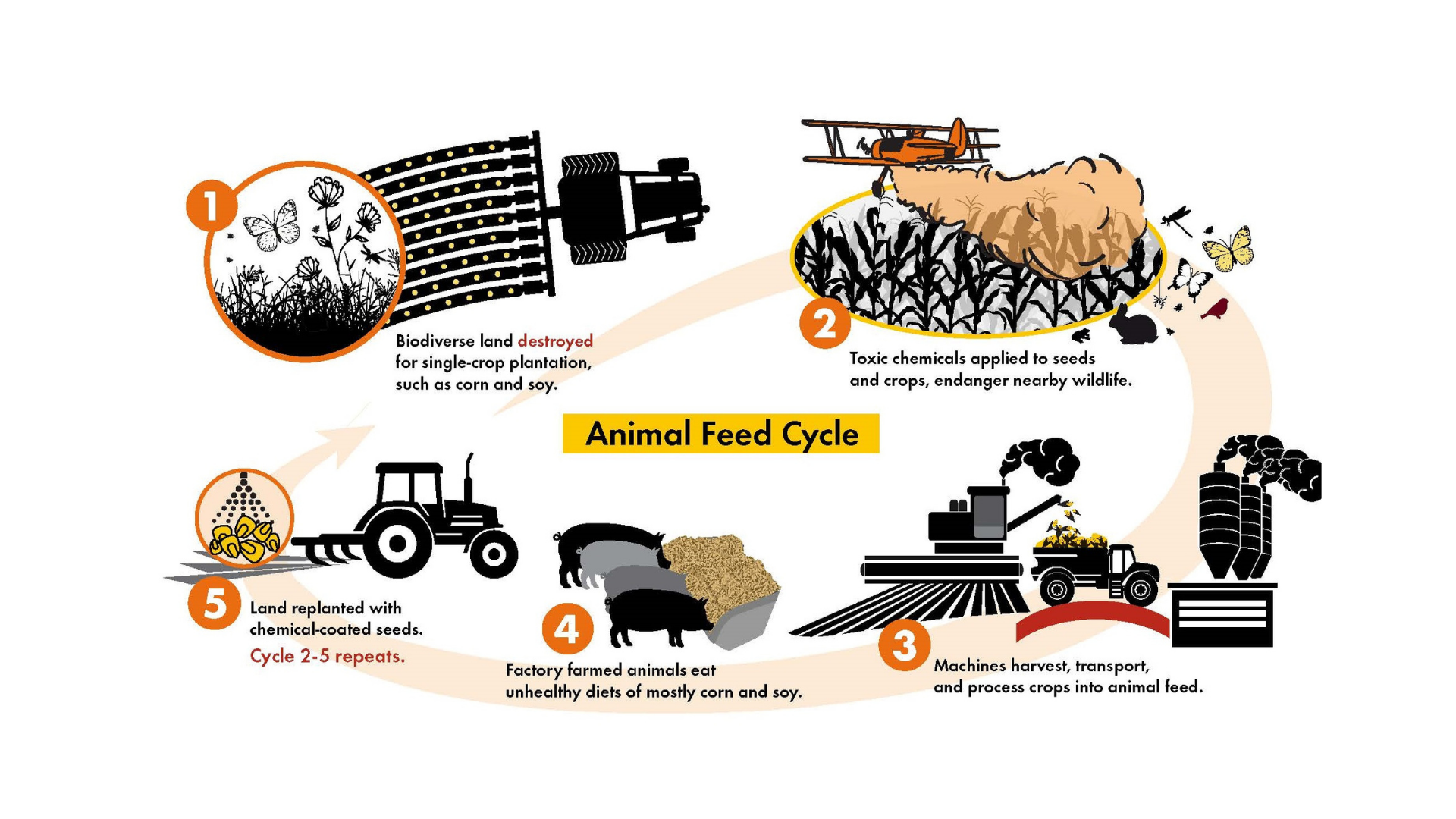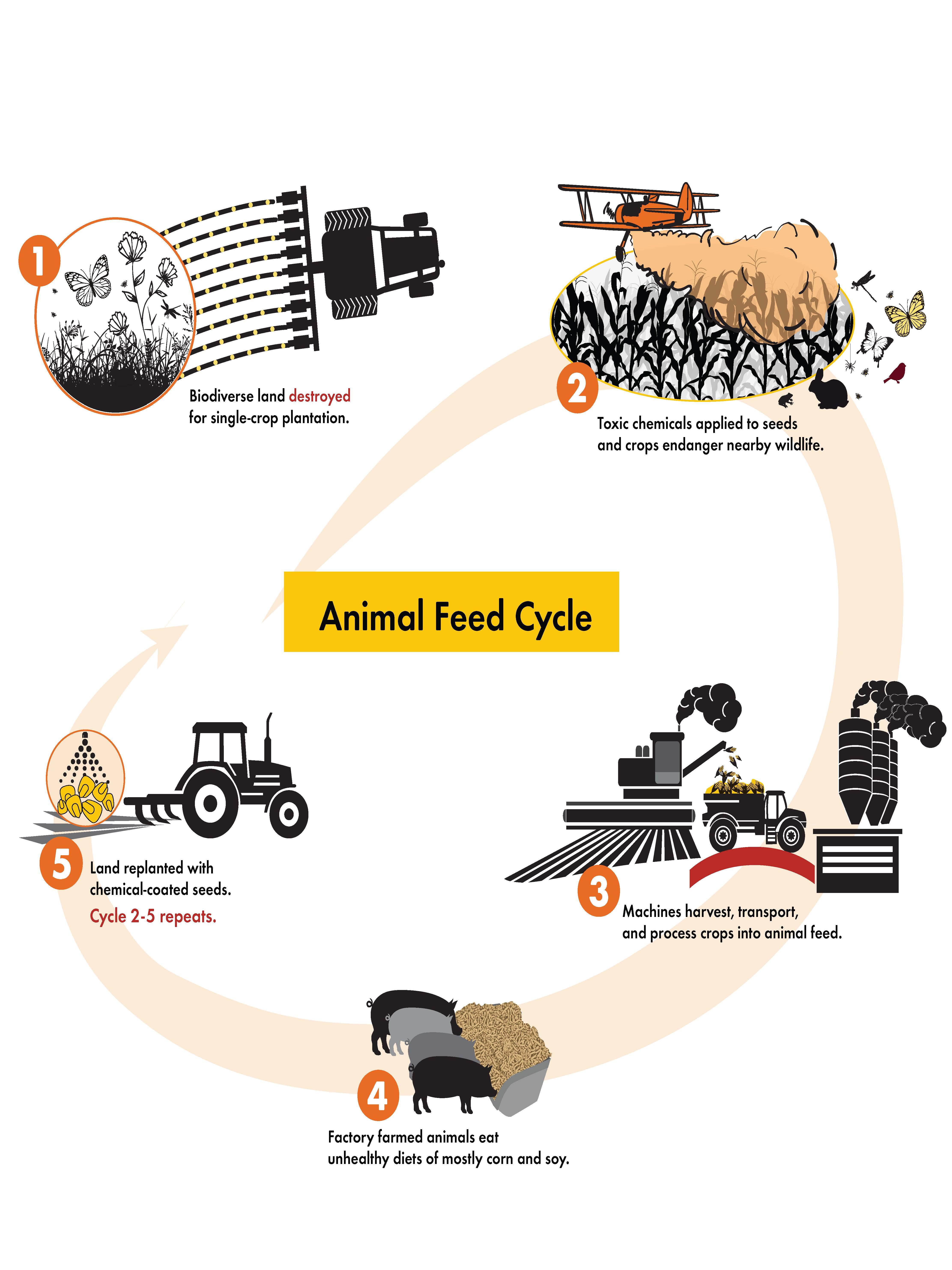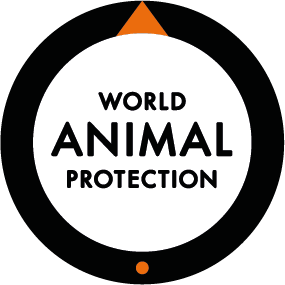Wild animals and farmed animals are suffering on a massive scale, and the culprit is the same.
The growth and expansion of factory farming is not only perpetuating enormous cruelty and suffering for the millions of animals farmed annually, but also pushing billions of wild animals and their habitats to the brink.
Factory Farming’s Role
Factory farming is destroying forests and grasslands around the world to make way for crops destined to feed animals suffering on cruel factory farms. Factory farming is ripping out forests – the lungs of the earth and homes to people and wild animals – in a lucrative animal feed trade that underwrites suffering on factory farms, severe loss of biodiversity, and devastating climate change.
Destruction of natural vegetation for expansion of soy or corn cropping systems leads to loss of biodiversity and threatens thousands of endangered and threatened birds, bats, bees, butterflies, and other important species.
Animal Feed
Billions of farmed animals endure unthinkable pain, distress, and mental anguish trapped in cages or crowded, barren sheds with body parts mutilated. The system rests on a relentless pursuit of profit at any cost. Factory farming has cynically engineered breeds of chickens raised for meat to grow quickly to slaughter weight in as little as 35 days, to save money on feed and upkeep. Fast-growing animals need high-calorie, high protein diets, and for that crops like soy and corn are grown in vast swathes in the US and overseas for import to feed factory-farmed animals near you.
People don’t always know how unsustainable production of animal feed underwrites cruel factory farming, but we’re resolved to investigate and expose the truth.


Pesticide Use
There is nothing sustainable about using vast swathes of community land and wild animal habitats to grow intensive animal feed crops. This is just big business seeking to maintain the status quo.
- Millions of pounds of hazardous chemicals are applied to intensive corn and soy crops as pesticides in the US.
- These toxic chemicals impede the ability of insects, birds, fish, and other species to survive and thrive.
- Pesticides also destroy the diverse plants on which these animals rely for shelter and food.
The use of herbicides and insecticides on US corn and soy have increased year-over-year since 2018 and are projected to continue rising alongside expanding production of factory-farmed meat. In 2018 alone, 235 million pounds of insecticides and herbicides were applied to the corn and soy grown in the US for farmed animal feed.
Three highly hazardous pesticides are used in large volumes each year on corn and soy in the US that we can attribute to the factory farm industry.
It’s Time for Change
To protect wildlife, biodiversity, and native ecosystems, we must reevaluate our consumption of animal products and choose a more sustainable future that emphasizes the production and consumption of diverse, plant-based foods.
And we must hold the large corporations that are perpetuating these harms — those producing feed crops, meat and dairy, and the pesticide agents — accountable.
How Can You Help?
Let’s end cruel factory farming, its dependence on unsustainable animal feed, and the destructive forces it unleashes on communities, our climate, and wild animal habitats around the world. By reducing the role of meat and dairy in our diets we can curb the growth of factory farming and reduce our collective and individual pesticide footprint.
Need help? Sign up for World Animal Protection’s Meating Halfway, a 21-Day Journey to Reduce Your Meat Consumption. You’ll get the support you need to eat less meat a few days a week or one plant-based meal per day.
--
Read the full report here.
